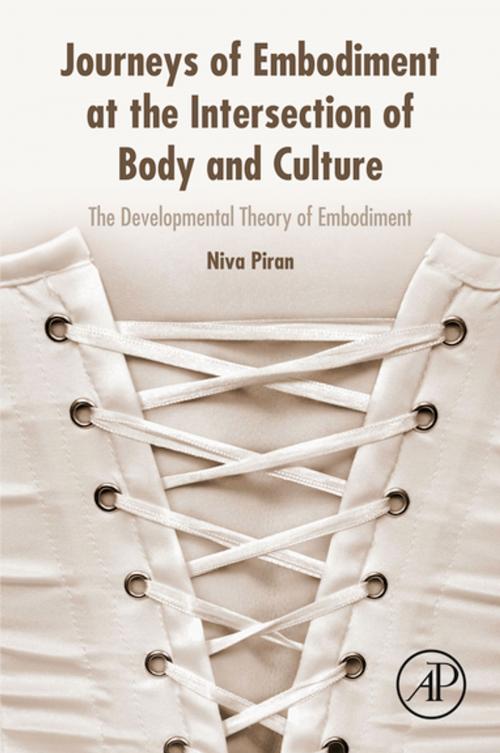Journeys of Embodiment at the Intersection of Body and Culture
The Developmental Theory of Embodiment
Nonfiction, Health & Well Being, Psychology, Developmental Psychology, Child & Adolescent, Child Development| Author: | Niva Piran | ISBN: | 9780128094211 |
| Publisher: | Elsevier Science | Publication: | September 15, 2017 |
| Imprint: | Academic Press | Language: | English |
| Author: | Niva Piran |
| ISBN: | 9780128094211 |
| Publisher: | Elsevier Science |
| Publication: | September 15, 2017 |
| Imprint: | Academic Press |
| Language: | English |
Journeys of Embodiment at the Intersection of Body and Culture: The Developmental Theory of Embodiment describes an innovative developmental and feminist theory—understanding embodiment—to provide a new perspective on the interactions between the social environment of girls and young women of different social locations and their embodied experience of engagement with the world around them. The book proposes that the multitude of social experiences described by girls and women shape their body experiences via three core pathways: experiences in the physical domain, experiences in the mental domain and experiences related directly to social power.
The book is structured around each developmental stage in the body journey of girls and young women, as influenced by their experience of embodiment. The theory builds on the emergent constructs of ‘embodiment’ and ‘body journey,’ and the key social experiences which shape embodiment throughout development and adolescence—from agency, functionality and passion during early childhood to restriction, shame and varied expressions of self-harm during and following puberty.
By addressing not only adverse experiences at the intersection of gender, social class, ethnocultural grouping, resilience and facilitative social factors, the theory outlines constructive pathways toward transformation. It contends that both protective and risk factors are organized along these three pathways, with the positive and negative aspects conceptualized as Physical Freedom (vs. Corseting), Mental Freedom (vs. Corseting), and Social Power (vs. Disempowerment and Disconnection).
- Examines the construct of embodiment and its theoretical development
- Explores the social experiences that shape girls throughout development
- Recognizes the importance of the body and sexuality
- Includes narratives by girls and young women on how they inhabit their bodies
- Invites scholars and health professionals to critically reflect on the body journeys of diverse girls and women
- Addresses the advancement of feminist, social critical and psychological theory, as well as implications to practice—both therapy and health promotion
Journeys of Embodiment at the Intersection of Body and Culture: The Developmental Theory of Embodiment describes an innovative developmental and feminist theory—understanding embodiment—to provide a new perspective on the interactions between the social environment of girls and young women of different social locations and their embodied experience of engagement with the world around them. The book proposes that the multitude of social experiences described by girls and women shape their body experiences via three core pathways: experiences in the physical domain, experiences in the mental domain and experiences related directly to social power.
The book is structured around each developmental stage in the body journey of girls and young women, as influenced by their experience of embodiment. The theory builds on the emergent constructs of ‘embodiment’ and ‘body journey,’ and the key social experiences which shape embodiment throughout development and adolescence—from agency, functionality and passion during early childhood to restriction, shame and varied expressions of self-harm during and following puberty.
By addressing not only adverse experiences at the intersection of gender, social class, ethnocultural grouping, resilience and facilitative social factors, the theory outlines constructive pathways toward transformation. It contends that both protective and risk factors are organized along these three pathways, with the positive and negative aspects conceptualized as Physical Freedom (vs. Corseting), Mental Freedom (vs. Corseting), and Social Power (vs. Disempowerment and Disconnection).
- Examines the construct of embodiment and its theoretical development
- Explores the social experiences that shape girls throughout development
- Recognizes the importance of the body and sexuality
- Includes narratives by girls and young women on how they inhabit their bodies
- Invites scholars and health professionals to critically reflect on the body journeys of diverse girls and women
- Addresses the advancement of feminist, social critical and psychological theory, as well as implications to practice—both therapy and health promotion















